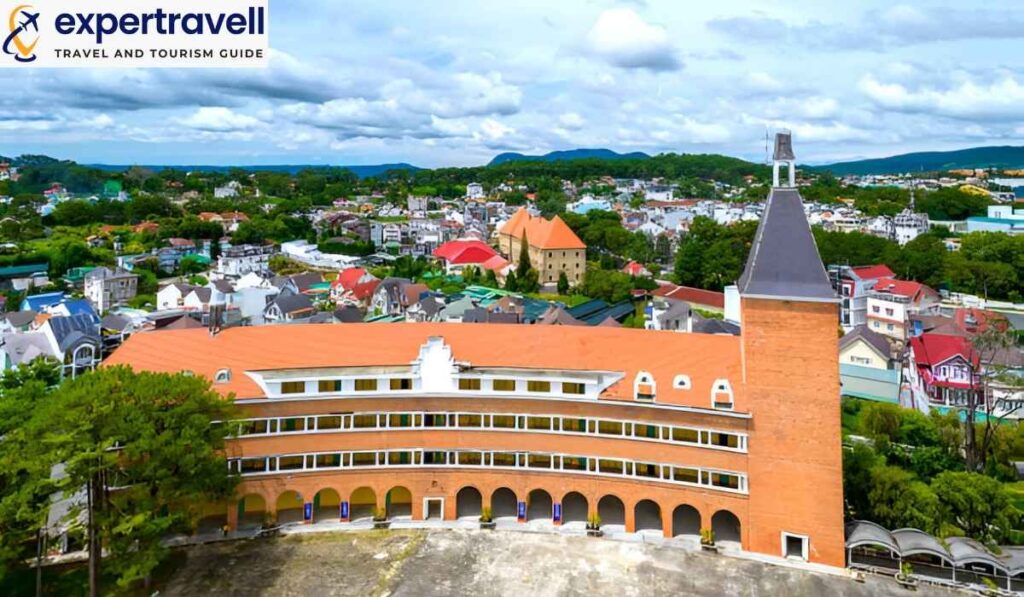Nestled in the lush mountains of northern Thailand, Pai is a serene destination that offers a perfect blend of tranquility and adventure. Whether you’re an artist seeking inspiration, an adventurer looking for your next thrill, or a nature lover craving peaceful landscapes, Pai has something for everyone.
With its laid-back vibe, breathtaking views, and vibrant community, this town has become a favorite for backpackers and digital nomads alike. This Pai Travel Guide is your most comprehensive resource for planning an unforgettable trip to this charming town. If you’re planning your first international adventure, you might also consider checking out Norway for First Time Visitors for a unique travel experience.”
How to Get to Pai: All Routes and Transportation Options
Pai is easily accessible, but the journey is part of the adventure. Here’s a breakdown of all your travel options to reach this hidden gem.
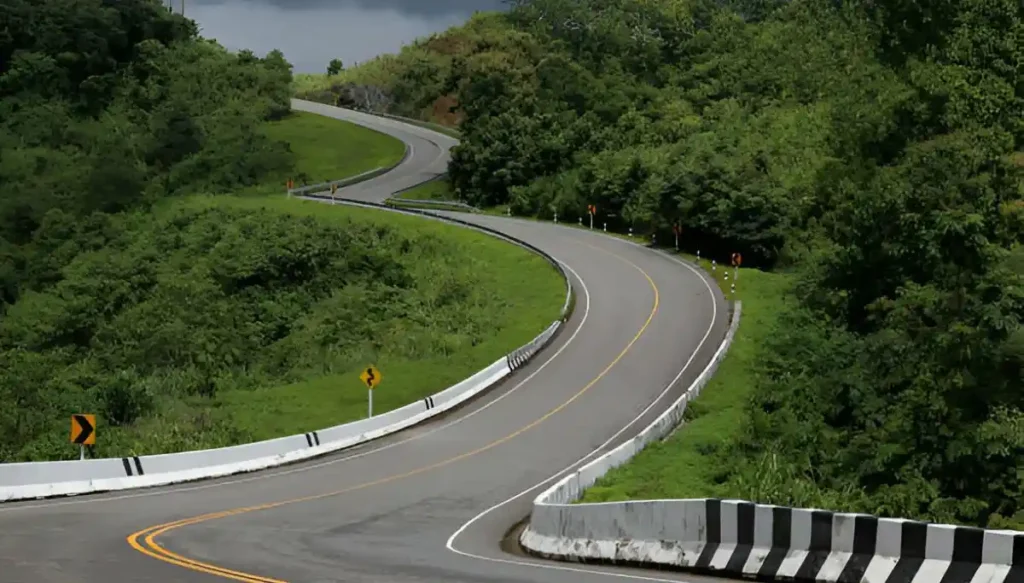
Road to Pai: The Famous 762 Curves
The drive from Chiang Mai to Pai is legendary, known for its 762 hairpin curves. It’s a thrilling road trip that promises stunning views, waterfalls, and scenic viewpoints along the way.
Minivans and Buses
Minivans are the most popular choice for travelers. Services like Aya provide hotel pick-up for about 250 baht (7 euros) one way. Buses are less frequent but slightly cheaper, departing from Chiang Mai’s Arcade 2 Station.
Private Car or Taxi
A private transfer offers comfort and flexibility, costing around 2,200 baht (55 euros). It is ideal for families or groups looking to travel at their own pace.
Motorbike
Adventurous travelers can rent a motorbike in Chiang Mai for as little as 200 baht/day. Be cautious the winding roads require experience and confidence.
Tip: If you’re prone to motion sickness, consider taking a pill before the journey to tackle the twists and turns of the Pai 762 curves road.
Flying to Pai: Is It Worth It?
While flights to Pai Airport have been discontinued, you can fly to Chiang Mai, the closest hub with international and domestic connections. From there, embark on the scenic drive to Pai. If you’re planning a trip that includes visiting Antelope Canyon, the experience of exploring Pai’s stunning landscapes will surely be an unforgettable adventure as well.
Flying to Pai: Pros and Cons Compared to Driving
| Aspect | Flying to Chiang Mai (Then Traveling to Pai) | Driving Directly to Pai |
| Travel Time | Faster (Flight: ~1 hour; Drive: ~3 hours from Chiang Mai) | Longer (Drive: ~3–4 hours from Chiang Mai) |
| Scenic Views | Limited (Aerial views during the flight) | Breathtaking mountain scenery and roadside attractions |
| Cost | Higher (Flight: ~1,000–2,000 baht; Minivan to Pai: ~250 baht) | More affordable (Minivan: ~250 baht; Motorbike: ~200 baht/day) |
| Flexibility | Fixed schedule of flights and transfers | Flexible with private car or motorbike |
| Convenience | Easy for international travelers to connect via Chiang Mai Airport | May require careful planning for driving or renting vehicles |
| Adventure Level | Low (Convenient but misses the excitement of the drive) | High (Challenging roads with 762 curves; thrilling for adventurers) |
| Suitability | Best for those on a tight schedule or with limited travel endurance | Best for nature lovers and road trip enthusiasts |
When to Visit Pai: Seasonal Travel Guide
Weather Overview: Month-by-Month Breakdown of Pai’s Weather
Pai, nestled in northern Thailand, experiences a variety of weather patterns throughout the year. From November to February, the cool season offers pleasant temperatures, making it the best time to visit Pai Thailand for trekking and exploring outdoor attractions.
March to May brings the hot season, with temperatures soaring, while June to October marks the rainy season, characterized by lush greenery and occasional downpours. For travelers who enjoy quieter trips, Pai’s rainy season is perfect for enjoying serene views without the crowds.

Best Time for Trekking, Hot Springs, and Cultural Experiences
The cool season (November to February) is ideal for trekking in the mountains, soaking in Sai Ngam hot springs Pai, and immersing yourself in Pai’s rich culture. Festivals like the Pai Jazz and Blues Festival add a vibrant touch to the town during this time. If you’re seeking other incredible adventures, Exploring Peru’s Amazon Rainforest offers an unforgettable experience.
Seasonal Attractions: Festivals and Flora
Pai hosts several local festivals throughout the year, such as the Songkran (Thai New Year) in April, offering visitors a chance to experience authentic Thai traditions. Unique flora and fauna sightings during the rainy season also make it a great time for nature enthusiasts.
Peak vs. Off-Peak Travel
Advantages of Off-Peak Travel
Traveling to Pai during off-peak months like the rainy season ensures fewer crowds, lower accommodation costs, and a more relaxed experience. While the rain may deter some, it enhances the natural beauty, making it a photographer’s paradise.
Insider Tips for Peak Seasons
If visiting during the peak cool season, plan early and book accommodations in advance. To avoid crowds, explore attractions like Yun Lai Viewpoint or Pai Canyon sunrise early in the morning.
Exploring Pai’s Natural Beauty: Top Attractions
Pai Canyon
Pai Canyon is a must-visit for nature lovers and adventure seekers. The stunning views and narrow trails make it an exciting spot for hiking. For the best experience, visit during sunrise or sunset when the landscape is bathed in golden light. Trails range from easy to challenging, so be prepared with good footwear and water.
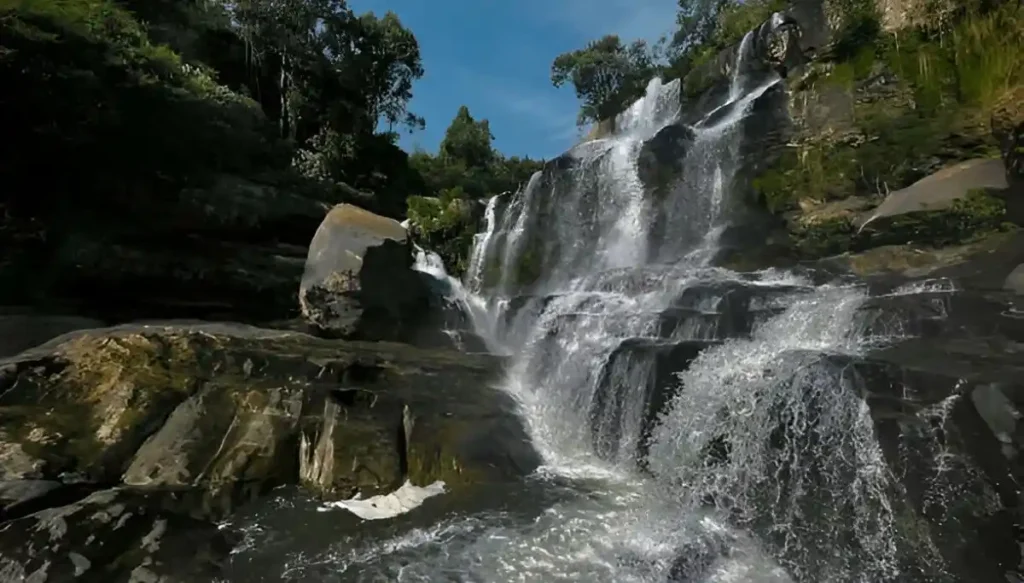
Waterfalls in Pai
Pai is home to several beautiful waterfalls:
- Mor Paeng Waterfall Pai: A family-friendly spot with easy access and natural pools for a refreshing dip.
- Pam Bok Waterfall Pai: Nestled in a rocky gorge, this waterfall offers a secluded escape.
- Secret Waterfalls in Pai: For the adventurous, hidden gems like lesser-known waterfalls provide tranquil retreats.
Hot Springs
Pai boasts two popular hot springs:
- Sai Ngam Hot Springs Pai: Known as the “secret hot springs,” this spot is quieter and surrounded by lush greenery.
- Tha Pai Hot Springs Guide: Perfect for relaxing in mineral-rich waters while enjoying scenic views.
When visiting, follow sustainability practices, such as avoiding the use of soaps or shampoos in the springs to protect the environment.
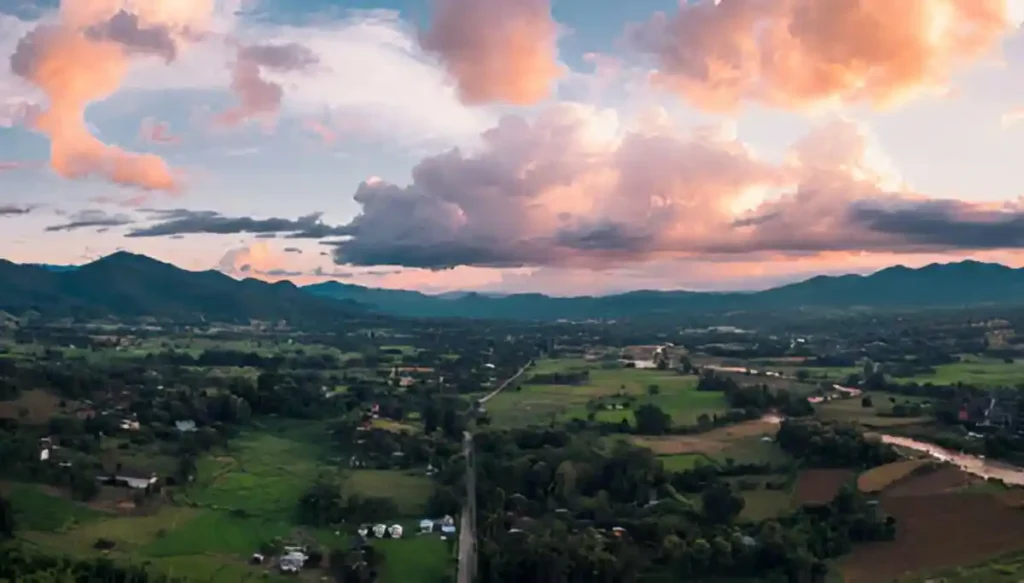
Yun Lai Viewpoint
Located just outside of Pai, Yun Lai Viewpoint offers breathtaking sunrise views over mist-covered mountains. It’s also a fantastic spot for photography and picnics. Arrive early to secure the best vantage point and capture stunning shots.
Hidden Gems
Ban Rak Thai Village
Experience a slice of Chinese culture in this charming village, known for its traditional architecture, tea plantations, and peaceful atmosphere.
Secret Caves and Unmarked Trails
Adventurous explorers can discover Pai’s hidden caves and unmarked trails, perfect for those seeking off-the-beaten-path experiences.
Experiencing Pai’s Cultural Richness
Wat Phra That Mae Yen (White Buddha)
Wat Phra That Mae Yen, also known as the White Buddha, is an iconic cultural landmark in Pai. Perched on a hilltop, this temple provides a serene environment for meditation and reflection. The White Buddha symbolizes peace, making it a must-visit spot for spiritual seekers.
Before visiting, dress modestly to respect local customs, and plan your trip early in the morning or late afternoon to avoid the heat. The atmosphere is perfect for winding down after exploring Pai’s bustling streets.
Stair Climb Guide and Panoramic View Insights
Reaching the White Buddha involves climbing a staircase with approximately 353 steps. Though the climb might seem daunting, the lush greenery and serene surroundings make it a meditative journey. At the top, you’ll be rewarded with panoramic views of Pai’s countryside a sight that perfectly encapsulates the town’s beauty. This makes it one of the best things to do in Pai.
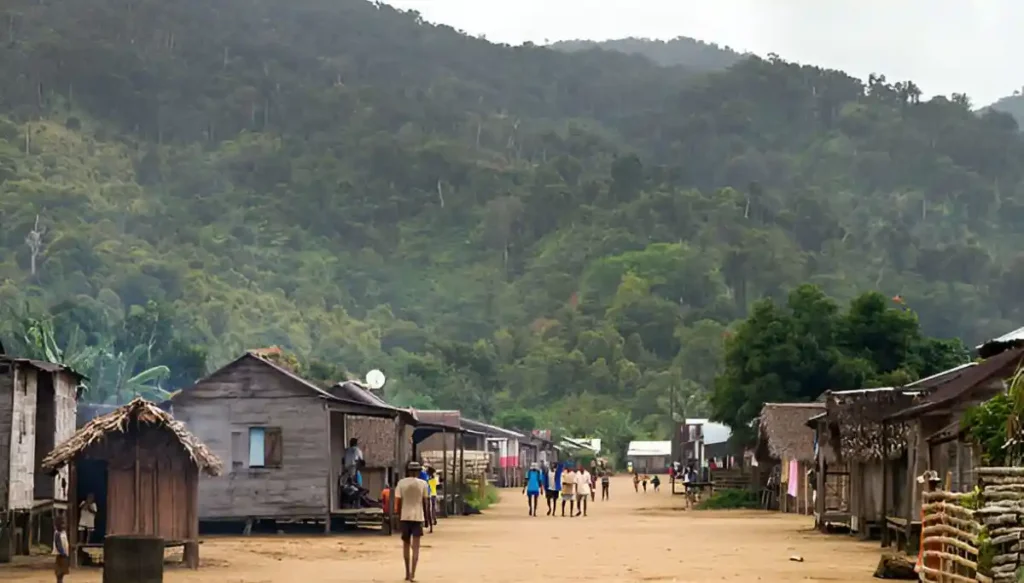
Santichon Village
Local Customs and How to Engage Respectfully
Santichon Village is a slice of Chinese Yunnanese culture in Pai. This village showcases the customs of its Yunnanese community, who migrated to Thailand decades ago. Visitors are encouraged to respect the villagers’ traditions, such as asking permission before taking photos and participating in activities thoughtfully.
Unique Activities: Tea-tasting ceremonies and Pottery Workshops
One of the highlights of Santichon Village is its tea-tasting ceremonies, where you can savor traditional Yunnanese tea while learning about its significance. Pottery workshops are another engaging activity that offers a hands-on cultural experience. These activities provide a deeper understanding of Pai’s cultural experiences and make your trip memorable.
Walking Street
Comprehensive Guide to Street Food, Artisan Crafts, and Evening Activities
Pai Walking Street is the heart of the town’s evening life. This bustling market is brimming with delicious street food, artisan crafts, and live music performances. From savory pad Thai to sweet roti pancakes, the variety of street food will leave you spoiled for choice.
Take your time to explore hidden stalls offering unique souvenirs, including local crafts in Pai, Thailand. Walking Street also offers activities like henna art and tarot card readings, adding to the vibrant atmosphere.
Local Stories
Interviews with Locals: Farmers, Artisans, and Musicians
To truly connect with Pai’s culture, take the time to engage with its residents. Locals, such as farmers and artisans, often share fascinating stories about their lives and traditions. Some may even invite you to learn about their crafts, such as weaving or instrument-making, adding authenticity to your Pai experience.
Musicians on Walking Street also bring life to Pai’s evenings with their performances. By striking up a conversation, you may uncover hidden gems or tips for exploring the town and its surroundings.
Adventures in Pai: For the Thrill Seekers
Pai isn’t just about relaxation; it’s also a hub for adventure enthusiasts. From trekking through lush forests to navigating winding roads on a motorbike, there’s something for every thrill-seeker.

Trekking and Caving in Pai
Exploring Pai’s natural beauty is best done on foot. Pai trekking tours offer detailed trails that take you through jungles, waterfalls, and scenic vistas. If you’re up for a more unique adventure, venture into the best caves in Pai such as Tham Lod Cave. These caves are best explored with guided tours, ensuring safety and a comprehensive understanding of their history and features.
Safety tip: Always carry a map and sufficient water when trekking. Joining a group tour can also enhance your experience and ensure you stay on track.
White-Water Rafting and Bamboo Rafting
For water enthusiasts, Pai offers thrilling experiences like white-water rafting and the serene charm of bamboo rafting in Pai, Thailand. White-water rafting is ideal for adrenaline junkies looking to conquer challenging rapids, while bamboo rafting provides a peaceful way to enjoy the river’s calm flow. Both options offer a unique perspective of Pai’s lush surroundings.
Motorbiking Around Pai
Exploring Pai on two wheels is a popular choice. Renting a motorbike in Pai is affordable, and the Pai scenic motorbike routes are filled with hidden stops and stunning views. Popular routes include the journey to Pai Canyon and Yun Lai Viewpoint. Ensure you have prior motorbike experience as the roads can be winding and require confidence.
Pro tip: Use a map to discover hidden gems like waterfalls and quiet villages along the way.
Photography Spots in Pai
For photography enthusiasts, Pai is a paradise. Capture stunning images at Pai hidden photography spots like the Bamboo Bridge or Pai Canyon. The town’s unique landscapes provide perfect opportunities for breathtaking photos during sunrise and sunset.
Food and Drink in Pai: A Gastronomic Adventure
Pai’s culinary scene is as diverse as its landscapes, offering flavors that cater to all palates. From street food to fine dining, every meal is an adventure in itself.

Pai’s Culinary Scene
Pai is a food lover’s haven. Start your gastronomic journey with Pai street food guides available at the Walking Street market, where you can find everything from pad Thai to exotic snacks. For a more refined dining experience, visit the best restaurants in Pai, such as OM Garden Café or Earth Tone, which offer healthy and delicious options.
Signature Dishes to Try
No trip to Pai is complete without savoring Northern Thai food. Try specialties like Khao Soi in Pai, a flavorful curry noodle dish, and Sai Oua, a spicy sausage. If you’re vegetarian, Pai offers several locally inspired dishes to suit your taste.
Don’t miss the opportunity to indulge in Pai’s street food. The town’s vibrant night markets are a treasure trove of authentic and budget-friendly dishes.
Coffee Culture in Pai
Pai’s coffee culture is thriving, making it a must-visit destination for coffee enthusiasts. Explore Pai coffee shops like Tham Ma Daa Café, known for its tranquil setting and exceptional brews. For a unique experience, consider joining coffee-tasting tours in Pai that take you to small farms, allowing you to learn about coffee production while enjoying fresh, aromatic cups.
Where to Stay in Pai: Accommodation for Every Traveler
Pai boasts a wide range of accommodations catering to various budgets and preferences. Whether you prefer luxurious retreats or unique eco-lodges, you’ll find the perfect place to call home.
Luxury Resorts
If you’re looking for an indulgent stay, Pai’s luxury resorts offer unparalleled comfort. Reverie Siam, a standout choice, combines modern amenities with traditional Thai charm. This boutique resort features stunning views, a serene ambiance, and exclusive services like private dining and guided tours. Book early to secure your spot, especially during peak seasons.
Budget-Friendly Stays
For travelers on a budget, Pai has numerous guesthouses and hostels that provide excellent value for money. Popular options like Countryside Resort and Country Hut offer cozy cottages and shared spaces, ensuring comfort without breaking the bank. Budget guesthouses in Pai are perfect for backpackers and those on tight schedules.
Unique Stays
For a one-of-a-kind experience, consider staying at treehouses in Pai, Thailand or eco-lodges. These accommodations, such as farm stays and nature retreats, immerse you in Pai’s lush surroundings. They’re ideal for travelers looking to reconnect with nature.
Location Guide: Best Areas to Stay
- For adventurers: Stay near Pai Canyon for easy access to hiking trails and breathtaking sunsets.
- For families: Look for accommodations close to Pai Walking Street for convenient dining and entertainment options.
- For solo travelers: Choose centrally located hostels like Society House Luxury Hostel to meet fellow travelers and explore Pai on foot.
Wellness and Relaxation in Pai
Pai is a haven for wellness seekers, offering a variety of retreats and therapeutic experiences to help you wind down.

Yoga and Meditation Retreats
Reconnect with your inner self at one of Pai’s renowned yoga and meditation retreats. Studios like Pai Yoga Shala and Xhale Yoga Pai provide mindfulness practices in serene settings. Participants often rave about the transformative experiences they gain here. For wellness travel, Pai, Thailand, is an unmatched destination.
Thai Massage and Spa Experiences
Pai is home to some of the best spas in Pai, Thailand, where you can indulge in traditional Thai massages. Popular options include Pai Village Boutique Resort’s spa and Ozone Massage, each offering unique therapies. Treat yourself to a day of pampering and relaxation.
Healing Hot Springs and Wellness Farms
Unwind in Pai’s natural hot springs, such as Sai Ngam and Tha Pai. These springs are perfect for soaking away stress while surrounded by nature. For a holistic wellness experience, visit local farms offering organic produce and wellness workshops.
Sustainability Tips for Responsible Travel in Pai
Eco-Friendly Accommodations
Embrace sustainable travel in Thailand by choosing eco-friendly accommodations in Pai. Many lodges and resorts are committed to minimizing their environmental impact. Consider staying at places like Countryside Resort, which integrates eco-conscious practices such as solar power and waste management, or the Pai Village Boutique Resort, known for its locally sourced materials and environmentally friendly initiatives.
When selecting your stay, look for eco-friendly stays in Pai that focus on reducing energy consumption and supporting sustainable tourism in Thailand.
Supporting Local Communities
To promote ethical tourism in Pai, support local businesses and community-based initiatives. Shop for souvenirs crafted by local artisans or visit cultural centers like Santichon Village, where your contribution directly benefits the community.
Opt for tours run by local guides to ensure your travel spending supports Pai’s residents. Engage in ethical tourism by dining at locally owned restaurants and participating in workshops that showcase Pai’s rich heritage.
Leave No Trace Practices
Pai’s natural beauty deserves preservation. Follow Leave No Trace principles by minimizing waste, avoiding single-use plastics, and respecting local wildlife. Always carry a reusable water bottle, available at refill stations around town, and pack biodegradable toiletries.
Being mindful of these practices ensures your trip contributes positively to Pai’s ecosystem and community.
Ultimate Pai Itinerary: Tailored Plans for Every Traveler
3-Day Itinerary: Must-Visit Spots for Short Stays
If you’re on a tight schedule, spend 3 full days exploring Pai’s highlights. Start your mornings at Yun Lai Viewpoint for stunning sunrise views. Visit landmarks like the White Buddha and the Bamboo Bridge, then wind down with a stroll along Pai Walking Street in the evening. Don’t miss a visit to Pai Canyon, especially during sunset.
This 3-day Pai itinerary is perfect for travelers looking to tick off the best things to do in Pai while soaking up its serene atmosphere.
5-Day Itinerary: A Balanced Experience
For a more immersive experience, extend your trip to 5 days. Begin with the 3-day plan, adding adventures like hiking to Mae Yen Waterfall or exploring the Nam Lod Cave with a bamboo raft tour. Dedicate time to visiting the Hot Springs for relaxation and enjoying Pai’s vibrant café scene, featuring favorites like Bom Bowls and Earth Tone. This 5-day Pai travel guide offers a balance of adventure, culture, and downtime.
Week-Long Itinerary: Explore Pai In-Depth
A week-long stay allows you to delve deeper into Pai’s charm. Explore nearby villages, like Santichon Village, for a glimpse of local life. Take a motorbike tour of Pai’s surroundings, visit the Tham Lod Cave, and unwind with yoga classes or wellness treatments at the Pai Village Boutique Resort.
This week-long Pai travel plan lets you combine cultural exploration with opportunities to relax and recharge, making it ideal for backpackers and digital nomads alike.
Practical Tips for Traveling to Pai
Packing Essentials: What to Bring for Each Season
Pai experiences three distinct seasons: the cool, hot, and rainy seasons. Pack lightweight clothing for the hot season, along with sun protection like sunscreen and hats. For the cool season, especially from November to February, bring a light jacket as the evenings can be chilly. Don’t forget a waterproof jacket and sturdy shoes during the rainy season, as outdoor adventures may involve muddy trails.
Health and Safety Tips
Staying healthy and safe in Pai is straightforward with a few precautions:
- Stay Hydrated: Carry a reusable water bottle, especially if you’re hiking or exploring Pai’s natural wonders.
- Road Safety: Pai’s winding roads can be challenging. If you’re renting a motorbike, ensure you have prior experience and wear a helmet.
- Insect Protection: Bring mosquito repellent to protect against bites, especially during the rainy season.
Connectivity: Wi-Fi Spots and SIM Card Recommendations
Pai offers excellent connectivity for a small town. Many cafes, like Earth Tone and Tham Ma Daa Cafe, provide free Wi-Fi, making it easy for digital nomads to work remotely. For mobile connectivity, buy a Thai SIM card from providers like AIS or TrueMove, which offer reliable coverage and affordable data plans.
Currency and Budgeting Tips
Pai operates primarily on cash, but some upscale hotels and restaurants accept credit cards. ATMs are available, but always carry some cash for local markets and street food. Budget travelers can enjoy Pai with costs as low as 500–700 THB per day, while mid-range accommodations and activities might push the budget to 1,500–2,000 THB daily.
Comparing Pai with Other Northern Thai Destinations
1. Pros and Cons: Pai vs. Chiang Mai
- Pai: A tranquil escape with fewer tourists and a slower pace, perfect for unwinding amidst nature.
- Chiang Mai: A larger city with a mix of modern amenities, cultural landmarks, and vibrant nightlife. Ideal for urban explorers.
2. Pros and Cons: Pai vs. Chiang Rai
- Pai: Renowned for its natural beauty and bohemian vibe, it appeals to artistic souls and outdoor enthusiasts.
- Chiang Rai: Famous for its iconic White Temple and Golden Triangle, it caters to those interested in culture and history.
3. Pros and Cons: Pai vs. Mae Hong Son
- Pai: Easier to access and more tourist-friendly, offering a wide range of activities and accommodations.
- Mae Hong Son: A quieter, less commercialized town ideal for those seeking off-the-beaten-path experiences.
Why Pai Should Be Your Next Destination
Pai’s unique charm lies in its ability to blend serenity and adventure seamlessly. From its breathtaking natural attractions like Pai Canyon and Mo Pang Waterfall to its vibrant walking street filled with food and crafts, this lovely town offers something for everyone. Whether you’re a backpacker, a digital nomad, or a family on vacation, Pai’s welcoming atmosphere and diverse experiences will make your trip unforgettable.
If you’ve visited Pai or have questions about planning your trip, feel free to share your experiences or ask in the comments below. Let’s make your Pai adventure extraordinary!
Frequently Asked Questions
What is the best time to visit Pai, Thailand?
Pai is best visited during the cool season, from November to February, when the weather is mild, and the natural scenery is lush and vibrant. This period is ideal for outdoor activities like hiking and exploring waterfalls.
How can I get to Pai from Chiang Mai?
The most common way to get to Pai from Chiang Mai is by road. You can take a bus, van, or rent a motorbike for the scenic 3-hour journey through winding mountain roads. Flights to Pai are rare, but they are an option for those seeking convenience.
What are the must-visit attractions in Pai?
Pai offers several must-visit attractions, including Pai Canyon, the Land Split, Pam Bok Waterfall, and the iconic Pai Walking Street. Don’t miss a visit to the hot springs and the Yun Lai Viewpoint for breathtaking sunrise views.
Is Pai suitable for solo travelers?
Yes, Pai is a great destination for solo travelers. The town has a welcoming vibe, plenty of budget-friendly accommodations, and an array of activities like yoga, trekking, and exploring nearby villages that cater to solo adventurers.
What are the best activities to do in Pai?
Some of the best activities in Pai include soaking in the hot springs, visiting the Pai Canyon for sunset, exploring waterfalls, and taking a stroll through the vibrant Pai Walking Street market. Adventure seekers can also try white-water rafting and trekking.
Are there any vegetarian or vegan-friendly restaurants in Pai?
Pai is known for its diverse culinary scene, and there are plenty of vegetarian and vegan-friendly restaurants in town. Popular spots include Earth Tone, Bom Bowls, and Om Garden Café, which serve delicious plant-based meals.



